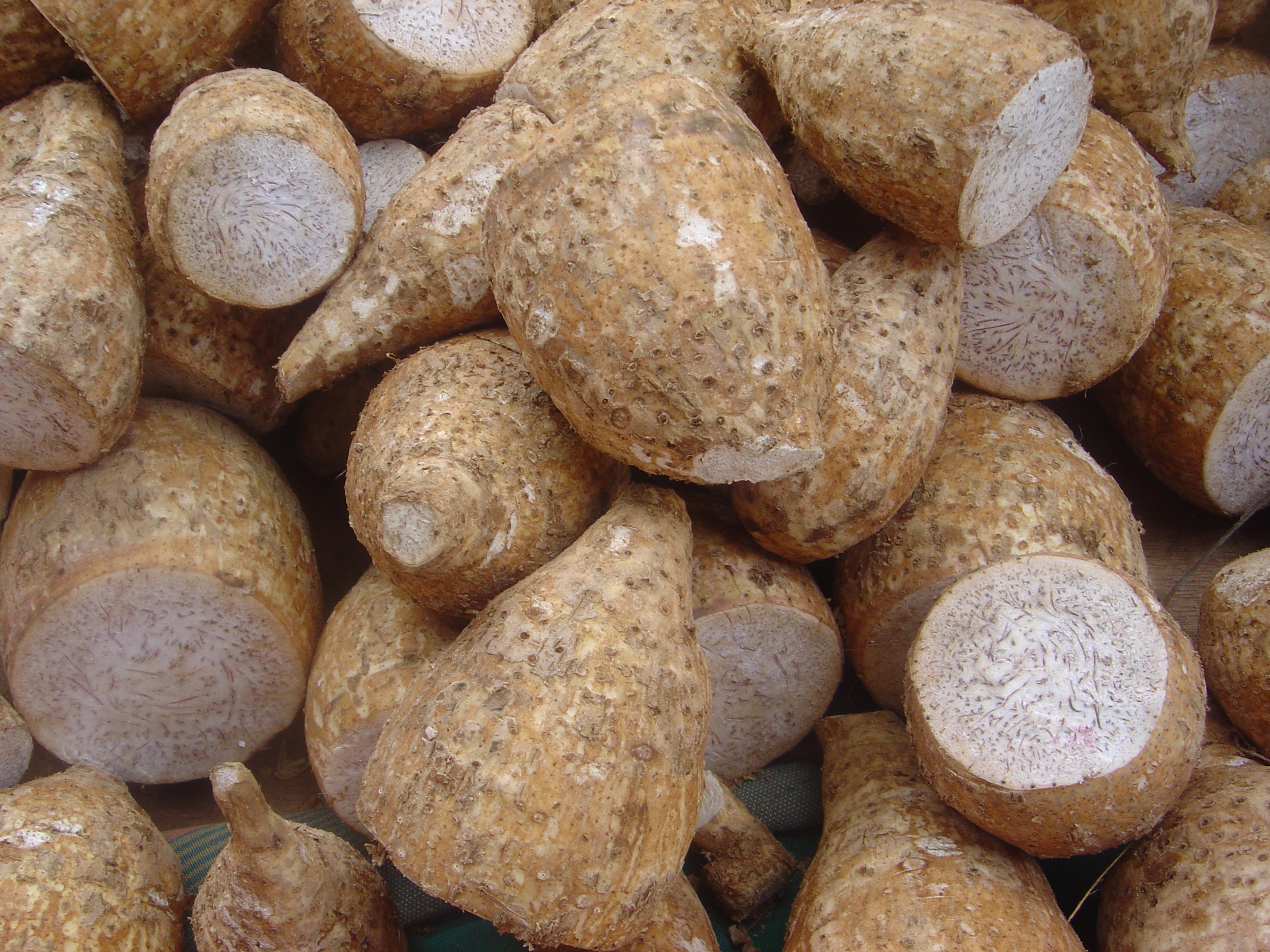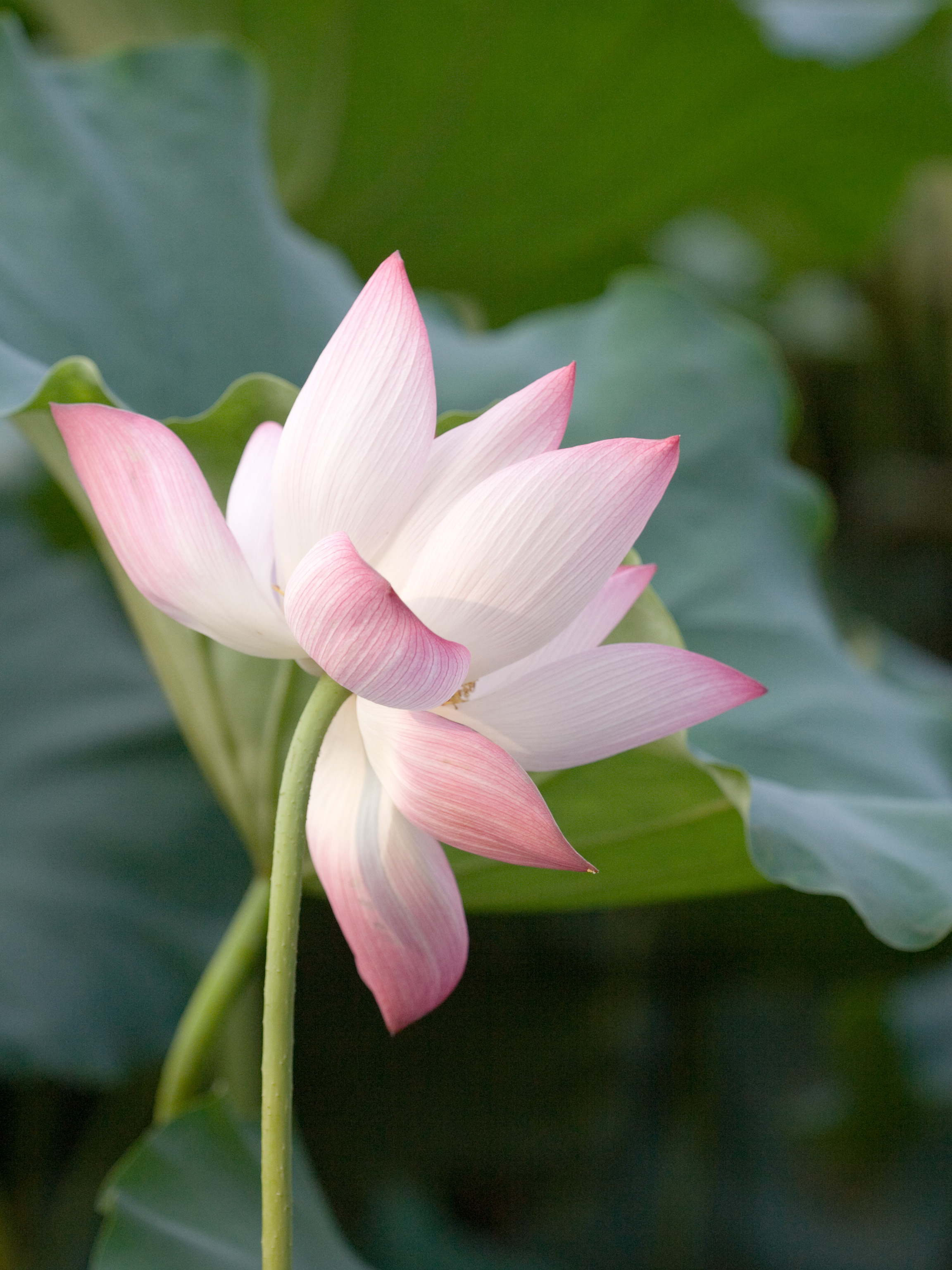|
Colocasia
''Colocasia'' is a genus of flowering plants in the family Araceae, native to Southeast Asia and the Indian subcontinent. Some species are widely cultivated and naturalized in other tropical and subtropical regions. The names elephant-ear and cocoyam are also used for some other large-leaved genera in the Araceae, notably ''Xanthosoma'' and ''Caladium''. The generic name is derived from the ancient Greek word , which in the Koine Greek of the 1st century botanist Pedanius Dioscorides may have meant the edible roots of both taro (''C. esculenta'') and ''Nelumbo nucifera''. The species ''Colocasia esculenta'' is invasive species, invasive in wetlands along the Gulf Coast of the United States, where it threatens to displace native wetland plants. Description They are Herbaceous plant, herbaceous perennial plants with a large corm on or just below the ground surface. The leaf, leaves are large to very large, long, with a Leaf shape, sagittate shape. The elephant's-ear plant gets ... [...More Info...] [...Related Items...] OR: [Wikipedia] [Google] [Baidu] [Amazon] |
Colocasia Esculenta
Taro (; ''Colocasia esculenta'') is a root vegetable. It is the most widely cultivated species of several plants in the family Araceae that are used as vegetables for their corms, leaves, stems and Petiole (botany), petioles. Taro corms are a food staple in Culture of Africa, African, Oceania, Oceanic, East Asian, Southeast Asian and South Asian cultures (similar to Yam (vegetable), yams). Taro is believed to be one of the earliest cultivated plants. Common names The English term '':wikt:taro#English, taro'' was :wikt:taro#Maori, borrowed from the Māori language when James Cook, Captain Cook first observed ''Colocasia'' plantations in New Zealand in 1769. The form ''taro'' or ''talo'' is widespread among Polynesian languages:*''talo'': taro (''Colocasia esculenta'') – entry in the ''Polynesian Lexicon Project ... [...More Info...] [...Related Items...] OR: [Wikipedia] [Google] [Baidu] [Amazon] |
Araceae
The Araceae are a family of monocotyledonous flowering plants in which flowers are borne on a type of inflorescence called a spadix. The spadix is usually accompanied by, and sometimes partially enclosed in, a spathe (or leaf-like bract). Also known as the arum family, members are often colloquially known as aroids. This family of 114 genera and about 3,750 known species is most diverse in the New World tropics, although also distributed in the Old World tropics and northern temperate regions. Description Within the Araceae, species are often rhizomatous or tuberous; many are epiphytic, creeping lianas or vining plants, and the leaves and tissues of the entire plant nearly always contains irritating calcium oxalate crystals or raphides, in varying degrees. The foliage can vary considerably from species to species. The majority of species produce an inflorescence consisting of a spadix (which some compare to a corn cob, in appearance), which is nearly always surrounded ... [...More Info...] [...Related Items...] OR: [Wikipedia] [Google] [Baidu] [Amazon] |
Cocoyam
Cocoyam is a common name for more than one tropical root crop and vegetable crop belonging to the Arum family (also known as Aroids and by the family name ''Araceae'') and may refer to: * Taro (''Colocasia esculenta'') – old cocoyam * Malanga (''Xanthosoma'' spp.) – new cocoyam Cocoyams are herbaceous perennial plants belonging to the family Araceae and are grown primarily for their edible roots, although all parts of the plant are edible. Cocoyams that are cultivated as food crops belong to either the genus Colocasia or the genus Xanthosoma and are generally composed of a large spherical corm (swollen underground storage stem), from which a few large leaves emerge. The petioles of the leaves (leaf stems) stand erect and can reach lengths in excess of . The leaf blades are large and heart-shaped and can reach in length. The corm produces lateral buds that give rise to side-corms (cormels, suckers) or stolons (long runners, creeping rhizomes) depending on the specie ... [...More Info...] [...Related Items...] OR: [Wikipedia] [Google] [Baidu] [Amazon] |
Raphide
Raphides ( ; singular ''raphide'' or ''raphis'') are needle-shaped crystals of calcium oxalate monohydrate ( prismatic monoclinic crystals) or calcium carbonate as aragonite ( dipyramidal orthorhombic crystals), found in more than 200 families of plants. Both ends are needle-like, but raphides tend to be blunt at one end and sharp at the other. Calcium oxalate in plants Many plants accumulate calcium oxalate crystals in response to surplus calcium, which is found throughout the natural environment. The crystals are produced in a variety of shapes. The crystal morphology depends on the taxonomic group of the plant. In one study of over 100 species, it was found that calcium oxalate accounted for 6.3% of plant dry weight. Crystal morphology and the distribution of raphides (in roots or leaves or tubers etc.) is similar in some taxa but different in others leaving possible opportunities for plant key characteristics and systematic identification; mucilage in raphide containi ... [...More Info...] [...Related Items...] OR: [Wikipedia] [Google] [Baidu] [Amazon] |
Corm
Corm, bulbo-tuber, or bulbotuber is a short, vertical, swollen, underground plant stem that serves as a storage organ that some plants use to survive winter or other adverse conditions such as summer drought and heat (perennation). The word ''cormous'' usually means plants that grow from corms, parallel to the terms ''tuberous'' and ''bulbous'' to describe plants growing from tubers and bulbs. A corm consists of one or more Internode (botany), internodes with at least one growing point, generally with protective leaves modified into skins or Tunica (biology), tunics. The tunic of a corm forms from dead Petiole (botany), petiole sheaths—remnants of leaves produced in previous years. They act as a covering, protecting the corm from insects, digging animals, flooding, and water loss. The tunics of some species are thin, dry, and papery, at least in young plants, however, in some families, such as ''Iridaceae'', the tunic of a mature corm can be formidable protection. For exa ... [...More Info...] [...Related Items...] OR: [Wikipedia] [Google] [Baidu] [Amazon] |
Xanthosoma
''Xanthosoma'' is a genus of flowering plants in the arum family, Araceae. The genus is native to tropical America but widely cultivated and naturalized in other tropical regions. Several are grown for their starchy corms, an important food staple of tropical regions, known variously as ''malanga'', ''otoy'', ''otoe'', cocoyam (or new cocoyam), ''tannia'', ''tannier'', ''yautía'', ''macabo'', ''ocumo'', ''macal'', ''taioba'', ''dasheen'', ''quequisque'', ''ʻape'' and (in Papua New Guinea) as Singapore taro (''taro kongkong''). Many other species, including especially '' Xanthosoma roseum'', are used as ornamental plants; in popular horticultural literature these species may be known as ‘ape due to resemblance to the true Polynesian ʻape, ''Alocasia macrorrhizos'', or as elephant ear from visual resemblance of the leaf to an elephant's ear. Sometimes the latter name is also applied to members in the closely related genera '' Caladium'', ''Colocasia'' (taro), and '' Alocasia''. ... [...More Info...] [...Related Items...] OR: [Wikipedia] [Google] [Baidu] [Amazon] |
Caladium
''Caladium'' () is a genus of flowering plants in the family Araceae. They are often known by the common name elephant ear (which they share with the closely related genera ''Alocasia'', ''Colocasia'', and ''Xanthosoma''), heart of Jesus, and angel wings. There are over 1000 named cultivars of ''Caladium bicolor'' from the original South American plant. The genus ''Caladium'' includes seven species that are native to South America and Central America, and naturalized in India, parts of Africa, and various tropical islands. They grow in open areas of the forest and on the banks of rivers and go dormant during the dry season. The wild plants grow to 15–35 inches (40–90 cm) tall, with leaves mostly 6-18 inches (15–45 cm) long and broad. Name From Malay ''Keladi'', which refers to a few genera within the '' Araceae '' family (''Alocasia'', ''Caladium'' and ''Dieffenbachia''). However, it may just specifically refer to the ''Colocasia'' genus. Species Ma ... [...More Info...] [...Related Items...] OR: [Wikipedia] [Google] [Baidu] [Amazon] |
Elephant Ear ("Colocasia") Blossum 01
Elephant ear may literally refer to the ear of an elephant. It may also refer to: Plants * Several genera in the family Araceae (Arums) ** ''Alocasia'', genus of broad-leaved perennials in tropical & subtropical Asia to Eastern Australia ** ''Caladium'', ornamental plants with arrowhead-shaped leaves originally from South America ** ''Colocasia'' (taro), a genus of flowering plants native to tropical Polynesia and southeastern Asia ** ''Philodendron giganteum'', a species of plant found in the Caribbean and South America ** ''Xanthosoma'', a genus native to tropical America cultivated for their starchy corms * Burdock, a thistle in the genus ''Arctium'' * '' Bergenia crassifolia'' or other plants in genus ''Bergenia'', shade-loving flowering garden plant Other uses * Another name for one of several desserts, including a palmier and fried dough * '' Gynandrocarpa placenta'', genus '' Gynandrocarpa'', a colonial ascidian, sea squirt, found off the Cape Peninsula, South Africa * Smok ... [...More Info...] [...Related Items...] OR: [Wikipedia] [Google] [Baidu] [Amazon] |
Leaf
A leaf (: leaves) is a principal appendage of the plant stem, stem of a vascular plant, usually borne laterally above ground and specialized for photosynthesis. Leaves are collectively called foliage, as in "autumn foliage", while the leaves, stem, flower, and fruit collectively form the Shoot (botany), shoot system. In most leaves, the primary Photosynthesis, photosynthetic Tissue (biology), tissue is the palisade mesophyll and is located on the upper side of the blade or lamina of the leaf, but in some species, including the mature foliage of ''Eucalyptus'', palisade mesophyll is present on both sides and the leaves are said to be isobilateral. The leaf is an integral part of the stem system, and most leaves are flattened and have distinct upper (Glossary of botanical terms#adaxial, adaxial) and lower (Glossary of botanical terms#abaxial, abaxial) surfaces that differ in color, Trichome, hairiness, the number of stomata (pores that intake and output gases), the amount and ... [...More Info...] [...Related Items...] OR: [Wikipedia] [Google] [Baidu] [Amazon] |
International Plant Names Index
The International Plant Names Index (IPNI) describes itself as "a database of the names and associated basic bibliographical details of seed plants, ferns and lycophytes." Coverage of plant names is best at the rank of species and genus. It includes basic bibliographical details associated with the names. Its goals include eliminating the need for repeated reference to primary sources for basic bibliographic information about plant names. The IPNI also maintains a list of standardized Author citation (botany), author abbreviations. These were initially based on Authors of Plant Names, Brummitt & Powell (1992), but new names and abbreviations are continually added. Description IPNI is the product of a collaboration between The Royal Botanic Gardens, Kew (Index Kewensis), The Harvard University Herbaria (Gray Herbarium Index), and the Australian National Herbarium (Australian Plant Name Index, APNI). The IPNI database is a collection of the names registered by the three cooperating ... [...More Info...] [...Related Items...] OR: [Wikipedia] [Google] [Baidu] [Amazon] |
Nelumbo Nucifera
''Nelumbo nucifera'', also known as the pink lotus, sacred lotus, Indian lotus, or simply lotus, is one of two extant taxon, extant species of aquatic plant in the Family (biology), family Nelumbonaceae. It is sometimes colloquially called a water lily, though this more often refers to members of the family Nymphaeaceae. The lotus belongs in the order Proteales. Lotus plants are adapted to grow in the flood plains of slow-moving rivers and delta areas. Stands of lotus drop hundreds of thousands of seeds every year to the bottom of the pond. While some sprout immediately and most are eaten by wildlife, the remaining seeds can remain dormant for an extensive period of time as the pond silts in and dries out. During flood conditions, sediments containing these seeds are broken open, and the dormant seeds rehydrate and begin a new lotus colony. It is cultivated in nutrient-rich, loamy, and often flooded soils, requiring warm temperatures and specific planting depths, with propagat ... [...More Info...] [...Related Items...] OR: [Wikipedia] [Google] [Baidu] [Amazon] |





